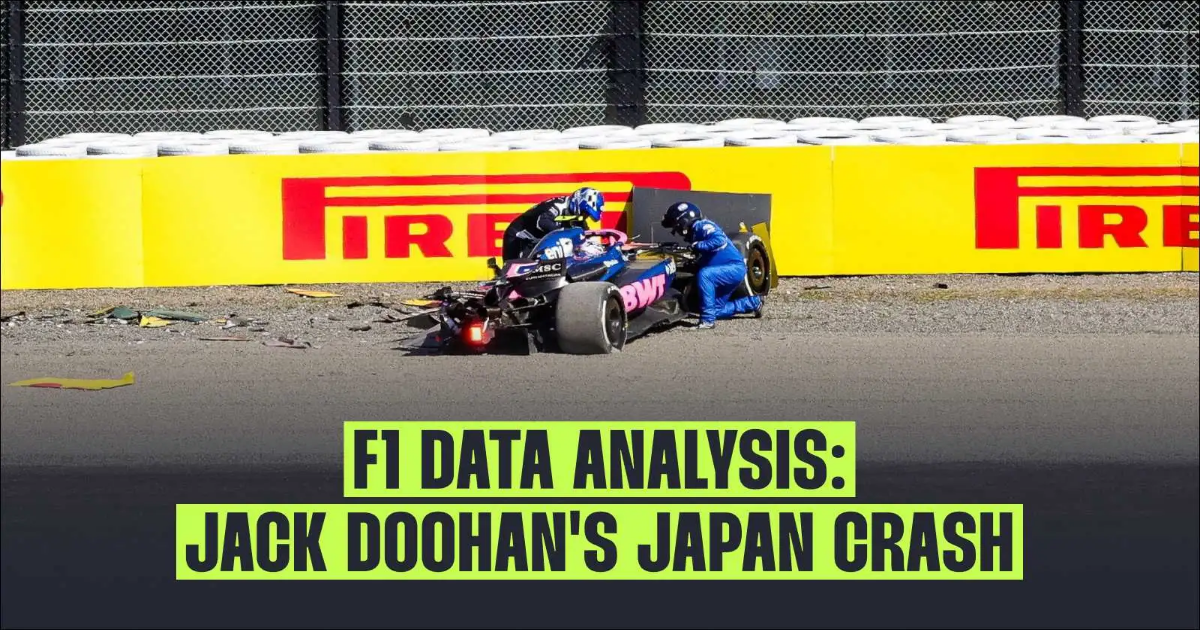Jack Doohan’s severe accident during the second Free Practice session of the Japanese GP caused a significant scare among Formula 1 fans. The Alpine driver was about to start his second flying lap of the day when he lost control of his car at Turn 1.
The cause of the accident was unknown for several minutes. Nothing seemed unusual as he approached the first, very fast corner of the Suzuka circuit.
What DRS data says about Jack Doohan’s strange crash
Later, it was discovered that Doohan had the DRS open when he initiated the right-hand turn at over 300 km/h into the corner. His Alpine thus lost all the aerodynamic downforce necessary to make the turn at such high speed and crashed violently into the barriers.
According to the official version given by Alpine team principal Oliver Oakes, the accident was a “misjudgment” by Doohan, who forgot to manually deactivate the DRS. According to some reports, the driver had successfully tried in the Enstone simulator to take the corner without deactivating DRS and wanted to replicate it in reality.
However, the telemetry data is quite puzzling. In his first push lap of the day — remember that Ryo Hirakawa used Doohan’s car in FP1 — the Australian driver lightly tapped the brakes before releasing the accelerator and deactivating the DRS. That brake tap was not enough to close the DRS flap.
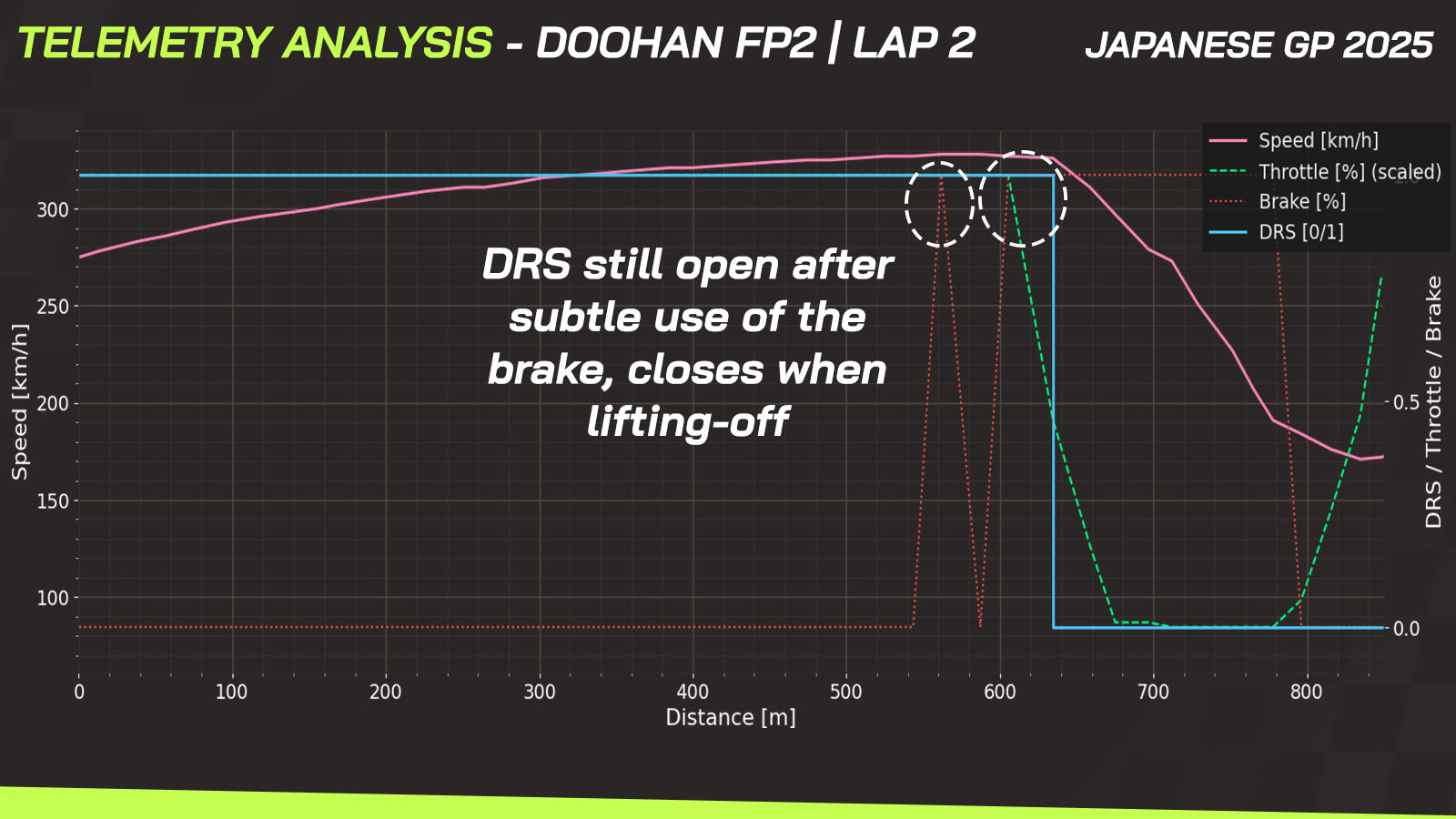
Despite not having telemetry available from our provider due to not even completing the first sector, other data sources that did record Doohan’s telemetry up to the moment of the accident show the same pattern as in the first push lap.
Doohan approaches Turn 1. He again makes a light tap on the brake, but this time does not lift off the accelerator before starting to turn the wheel. In other words, unlike the first push lap with the hard tyre, the only difference is that Doohan does not lift off the accelerator. And this seems to be the cause of the accident.
It is undoubtedly something very puzzling that could indicate that Doohan did intend to close the DRS but did so with a light brake tap. In the first push lap, he lifts off the accelerator just before turning the wheel, allowing him to take the corner normally, but in the second push lap, despite tapping the brake again—surely intending to close the DRS because there is no other reason—this time he does not lift off the accelerator before turning and, with the DRS still open, loses control of the car.
Pierre Gasly, in his first push lap with the hard tyre, also closes his DRS by lifting off the accelerator. We can verify this in his telemetry. He does not make any brake tap until reaching Turn 2.
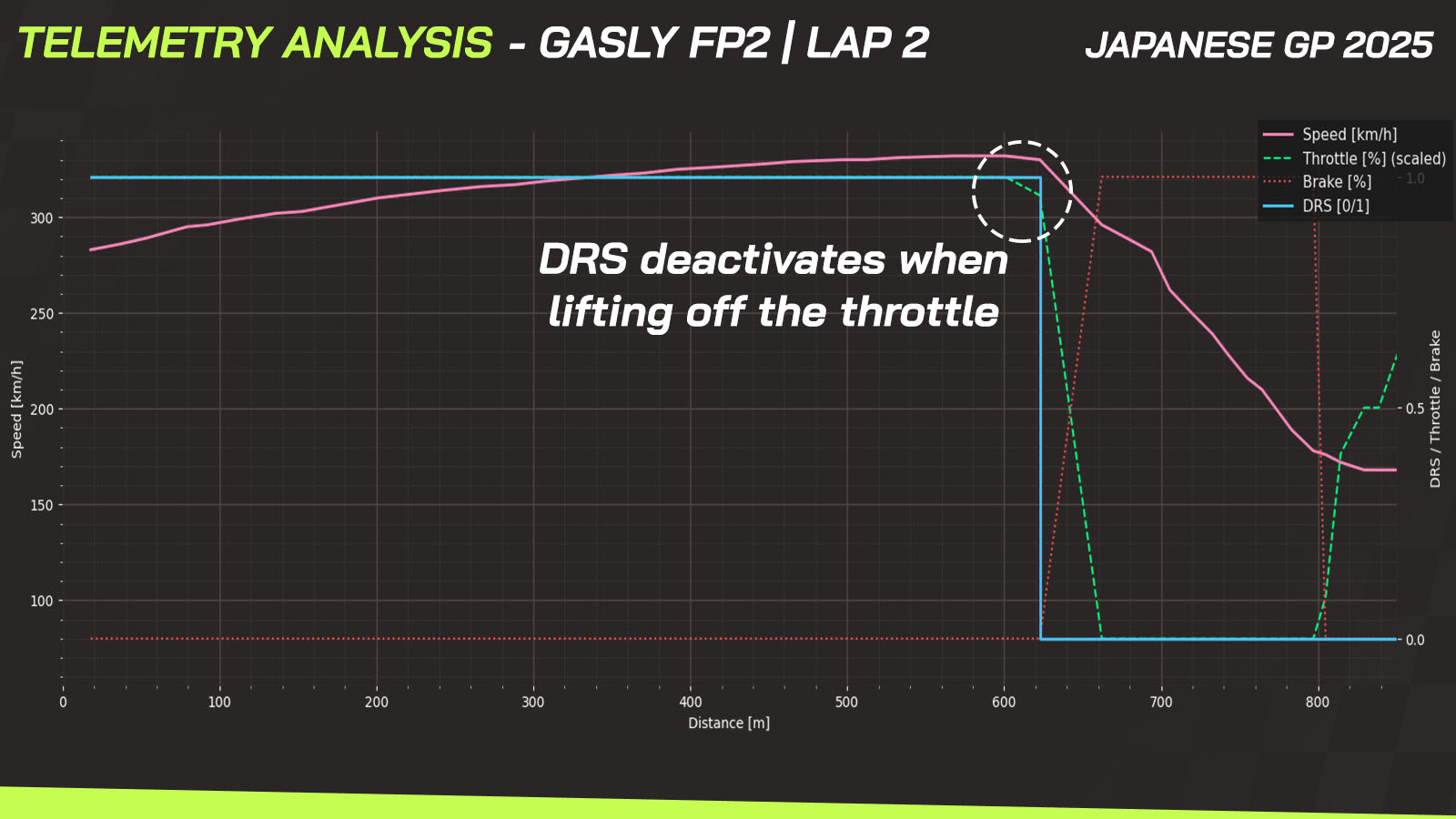
Dig deeper into the Japanese GP:
👉 Revealed: The impressive data behind Tsunoda’s first Red Bull outing
👉 Uncovered: Aston Martin’s diffuser, Sauber floor and more tech secrets
In the case of Hirakawa, in his fast lap of FP1 with the soft tyre, the Japanese driver seems to deactivate the DRS manually because it closes before any lift off the accelerator or any brake tap.
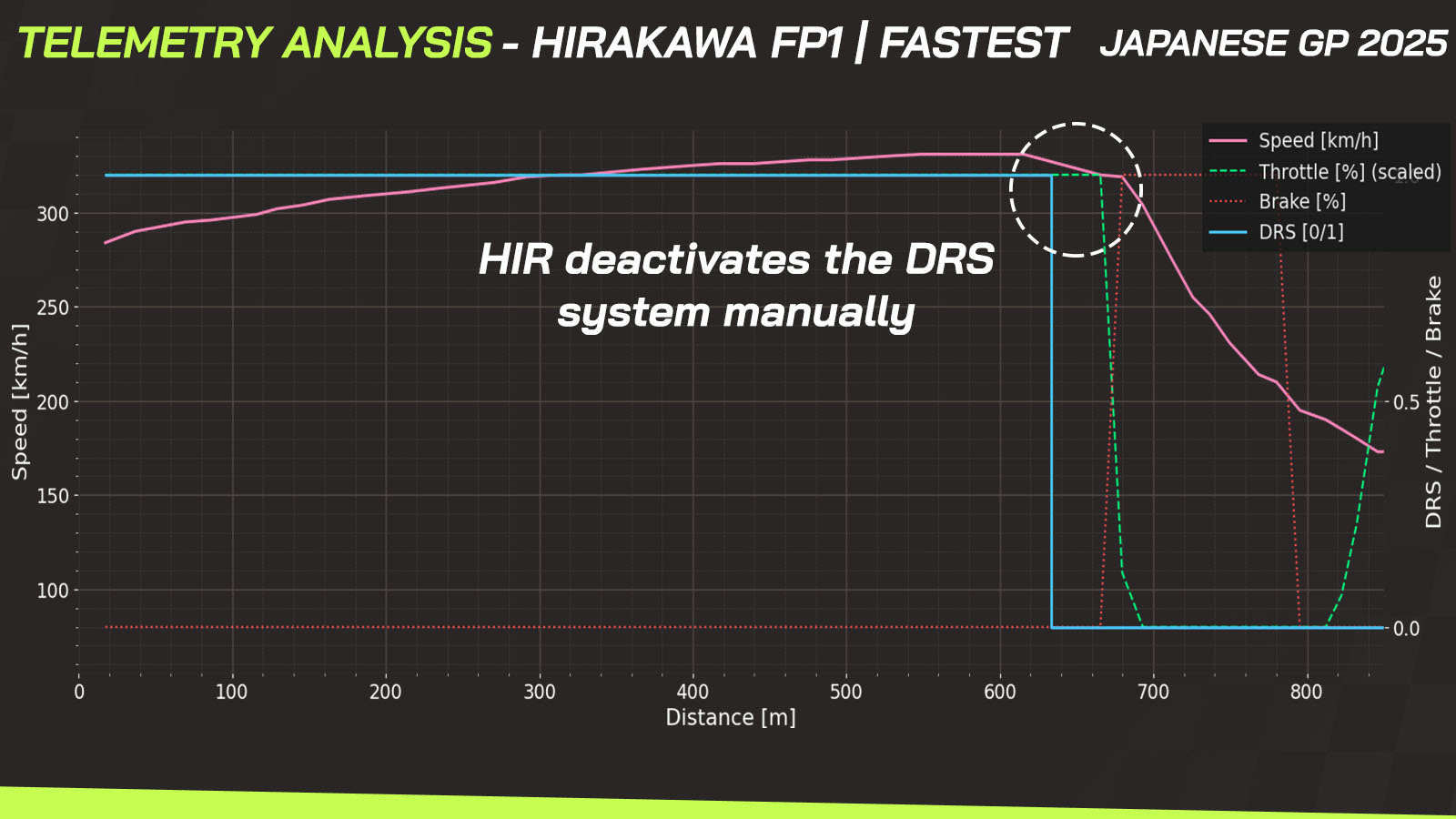
In another generic lap of Hirakawa with the medium tyre, like Gasly, the DRS deactivates when releasing the accelerator. But again, at no time is there a prior brake tap.
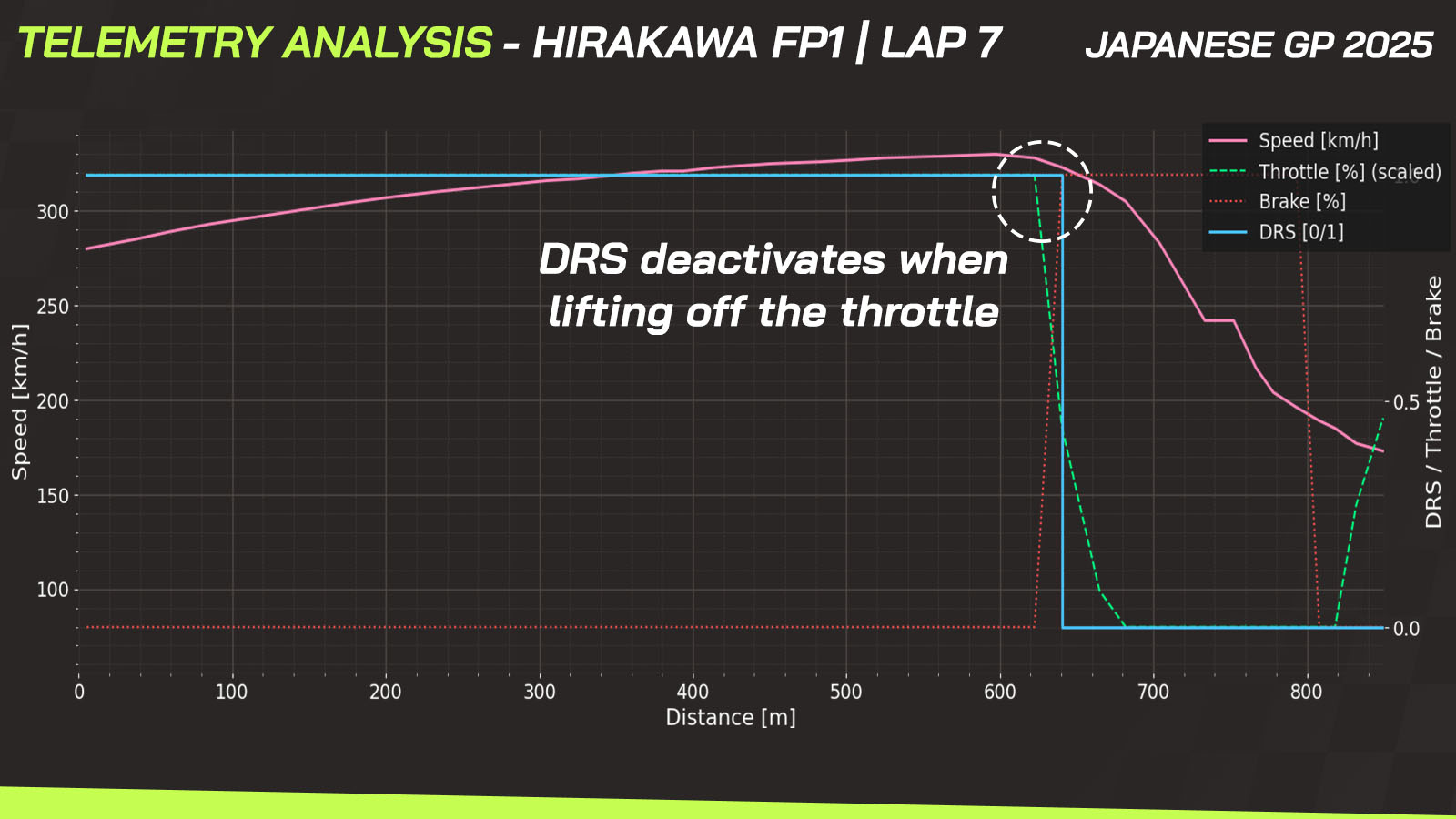
In other words, the anomaly in Doohan’s case, compared to his two teammates, is that inexplicable brake tap. Did the Australian driver do it intending to close the DRS? And if so, why didn’t it work?
Remember that there are 3 ways to deactivate the DRS: automatically by pressing the brake, by lifting off the accelerator, or manually by pressing a button on the steering wheel.
Charles Leclerc, in the telemetry of one of his FP2 laps, we can see that he approaches similarly to Doohan. But in his case, at the moment of applying the brake, the DRS does deactivate.
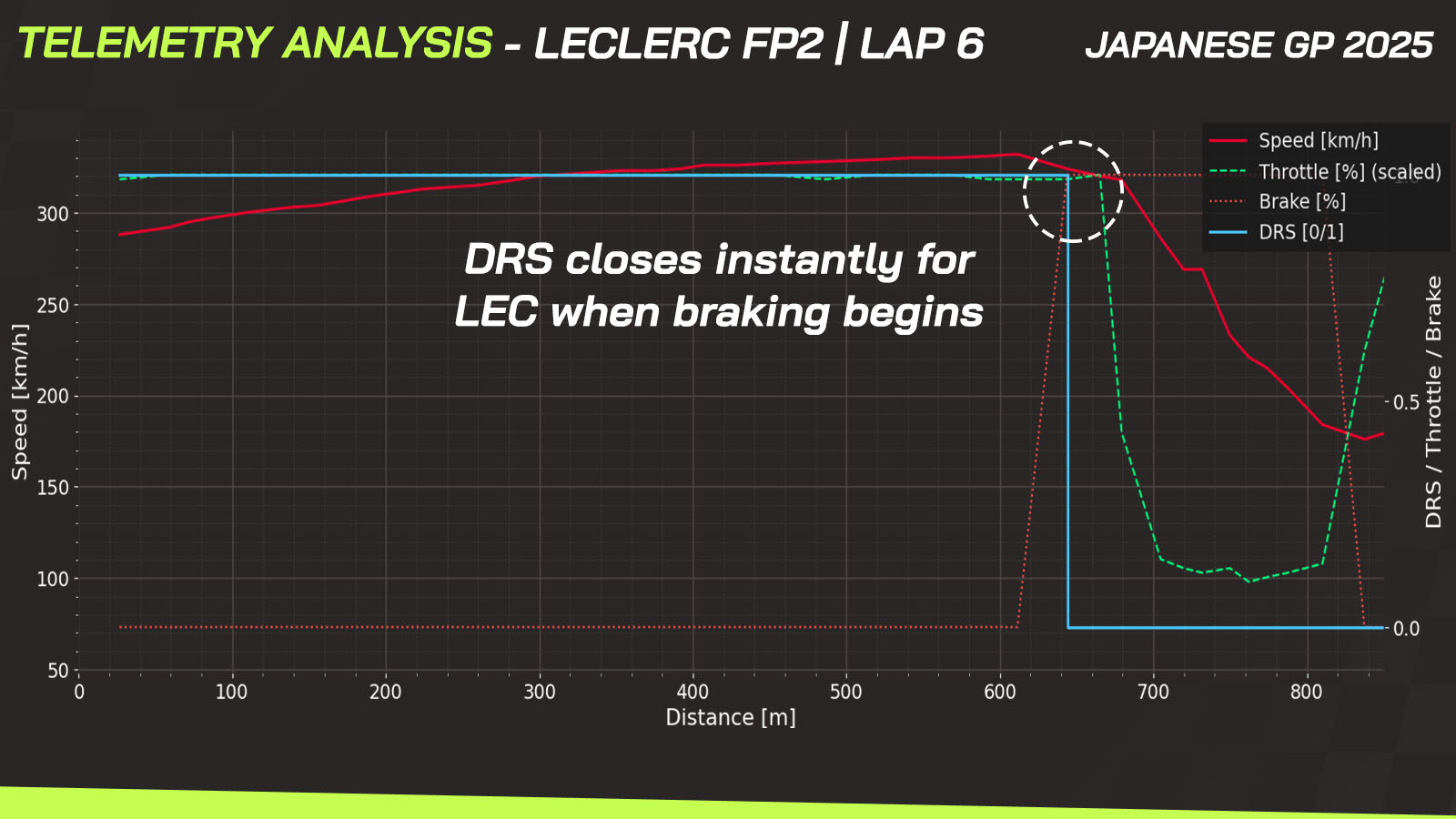
There is a situation that makes this a very peculiar accident: Suzuka’s first corner is very fast and does not require braking until reaching Turn 2, making the two most used methods to deactivate the DRS in this case: lifting off the accelerator or pressing the button manually to keep the foot flat.
While DRS is engineered to deactivate automatically upon braking, the exact sensitivity threshold isn’t publicly detailed. Drivers are trained to understand when manual intervention is necessary, especially in corners where braking isn’t substantial enough to trigger automatic deactivation.
Therefore, there are two theories about this accident. The first relates to Alpine’s official version and is that of driver “misjudgment.”
Doohan thought that a light brake tap was enough to close the DRS. In his first push lap, he makes this tap with that same intention, but the DRS does not close. It closes when lifting off the accelerator, as we have seen in the telemetry.
At the start of the second push lap, when the accident occurs, he again performs the tap intending to close the DRS. Thinking it is already deactivated, this time he approaches Turn 1 flat out without lifting off the accelerator.
The second theory, based on the telemetry and not the team’s official version, is that of a sensor failure in the DRS activator linked to the braking system. If the sensitivity that Doohan applied was sufficient to, in a correct deactivation operation, close the DRS, then this theory could be valid. But as we have explained, the sensitivity is not publicly detailed and Alpine has not confirmed this.
Without a doubt, the best news of the day is that Doohan emerged unscathed from the crash and appears to be fit to take part in the rest of the Grand Prix. The worst news is the tough job awaiting the mechanics and the high cost of repairs, which will in some way impact Alpine’s cost cap for this season.
Read next: The truth behind the different RB21s driven by Verstappen and Lawson
